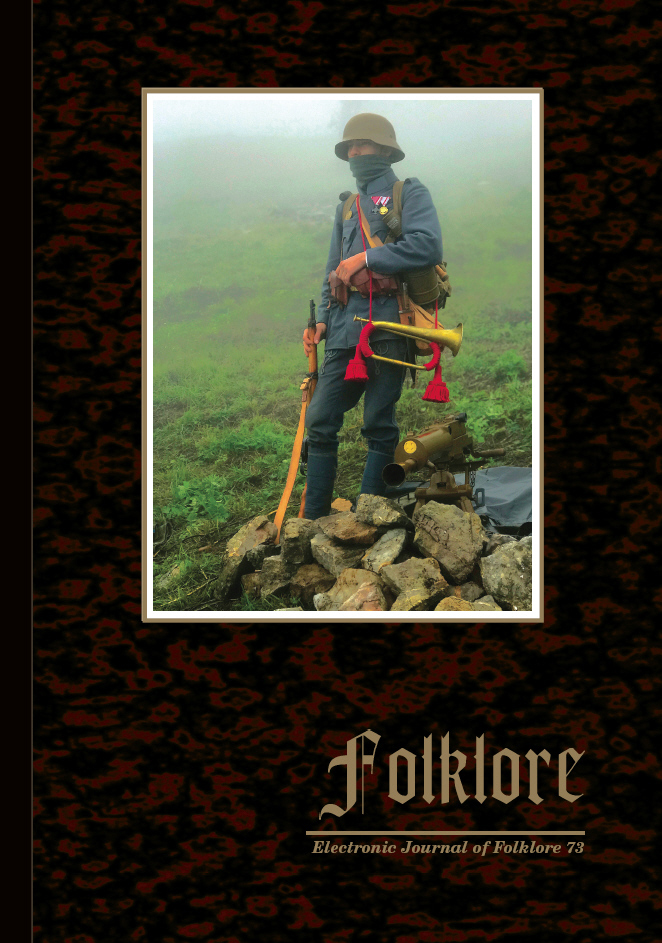Metaphorical Integrations in Kurdish Riddles
Metaphorical Integrations in Kurdish Riddles
Author(s): Rahman Veisi Hasar, Ebrahim BadakhshanSubject(s): Customs / Folklore, Cultural Anthropology / Ethnology, Culture and social structure
Published by: Eesti Kirjandusmuuseum
Keywords: blending theory of metaphor; contingent metaphor; discordant metaphor; Kurdish language; metaphor; riddle
Summary/Abstract: This paper aims at investigating the metaphorical integrations of riddles in the Kurdish language. For this purpose, 100 Kurdish riddles are analyzed according to the blending theory of metaphor (BT). Accordingly, the riddles are classified into three groups. The first one, which we call a contingent metaphor, involves those riddles shaped by metaphorical mapping between the precedent and the sequent as input spaces, which are then combined and compressed into the blend space. The linguistic structure of a contingent riddle includes the precedent space and some of the conceptual correspondences without any explicit reference to the sequent space. The possible candidates of the hidden sequent space are conditioned by the image-conceptual structure of the precedent space. The second group, which we call a discordant metaphor, includes those riddles that are based on a complicated metaphorical integration between the precedent and the sequent as input spaces: elements and relations of input spaces are cross-mapped, and then they are mixed and compressed into the blend space; and ultimately, a kind of disanalogy between spaces is brought about by backward projection. The linguistic structure of a discordant riddle includes two contradicting parts. The first part indicates the metaphorical integration, and the second shows the disanalogy. The candidacy of a possible sequent space is conditioned by the structure of the precedent space and by the differences highlighted by the backward projection. The metaphorical riddle in both groups is a specific kind of deliberate metaphor which invites the riddlee (addressee) to view (guess) the sequent in terms of the precedent. The deliberateness of the metaphorical riddle leads the riddlee to construct numerous metaphorical mappings between the precedent space and many possible candidates for the sequent space. The third group includes the non-metaphorical riddles not applying any kind of metaphor.
Journal: Folklore: Electronic Journal of Folklore
- Issue Year: 2018
- Issue No: 73
- Page Range: 161-188
- Page Count: 28
- Language: English

